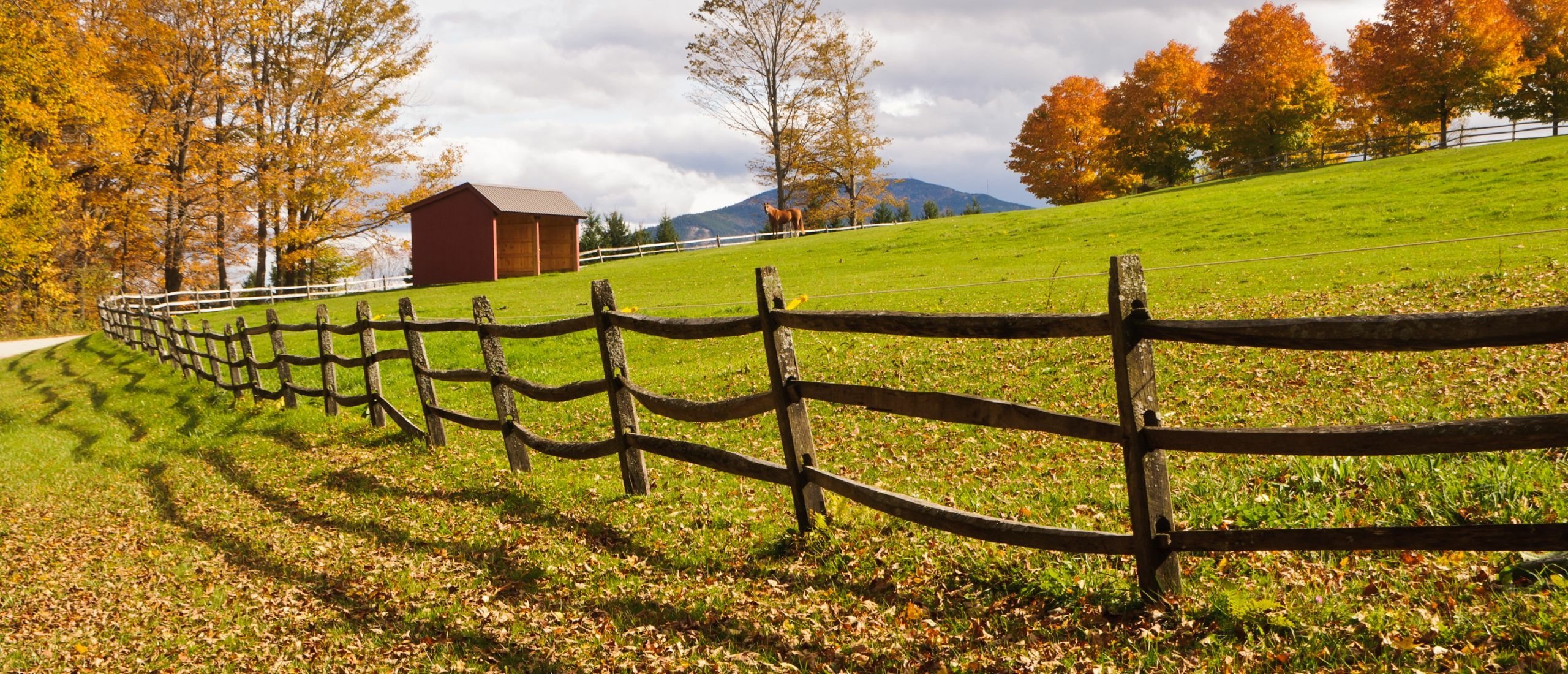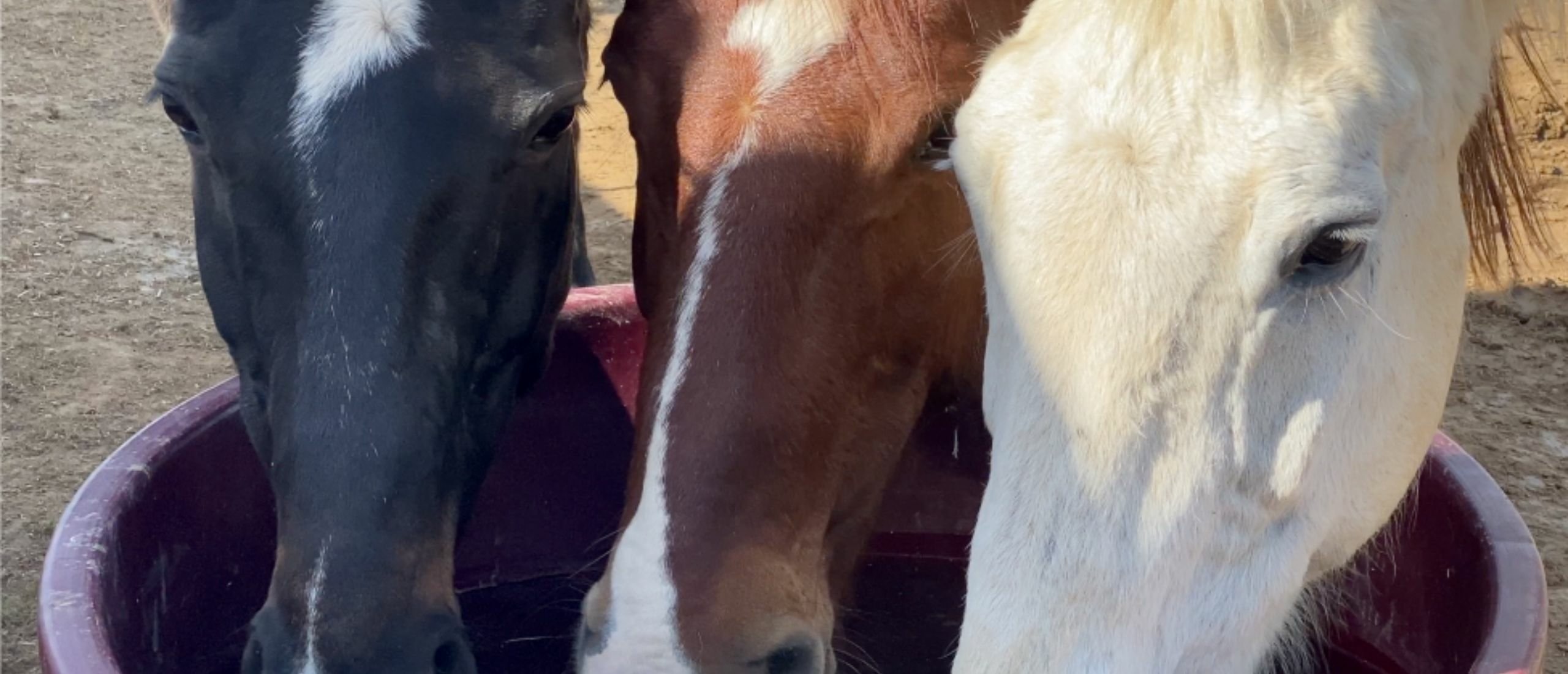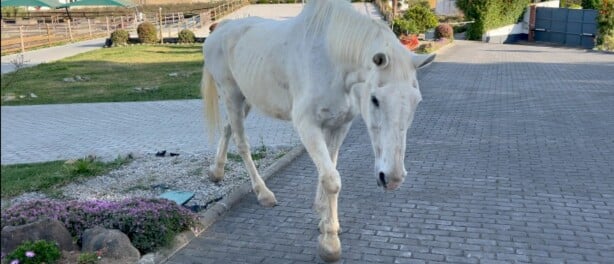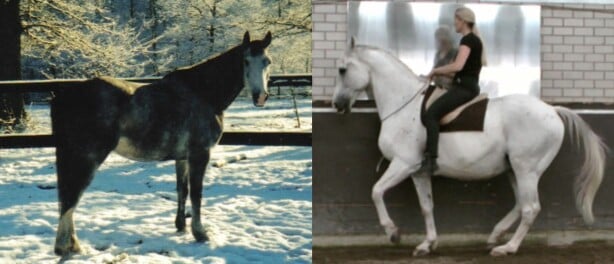Keeping our horses at home on our own property is a dream come true.
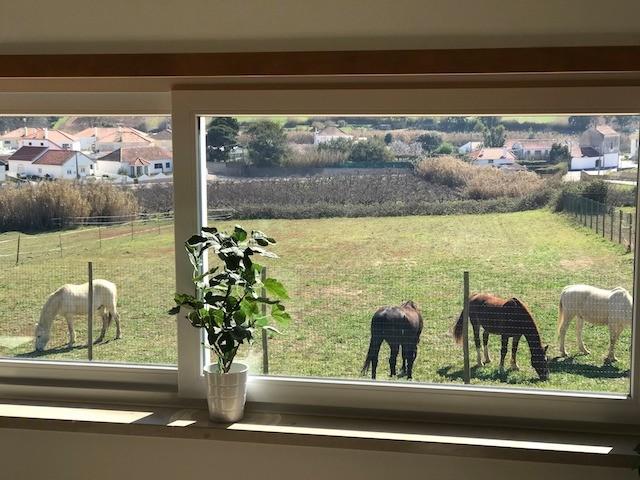
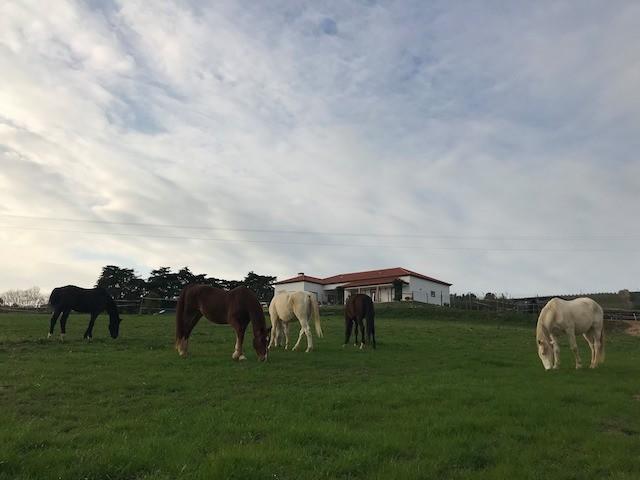
Now when we arrived at our new place in Portugal in 2017, there were no stalls or boxes, so we could decide what to do:
- traditional stalls,
- stalls with individual paddocks,
- pastures with shelters,
- a paddock paradise,
- an active stable,
- or something in between.
Let's first have a look at the pros and cons when it comes to keeping horses pasturedorstabled. Then, at the end of this article, I'll show a video of what we've chosen.
The Benefits of Pasture Time
Since we live next to the ocean in Portugal, it's not too hot and not too cold, so it is easy to have our horses pastured 24/7. As humans, we may think it’s too cold or too wet to be outside, but horses can deal with a much wider range of weather conditions than we can anyway.
To support them, our horses wear fly masks in summer and waterproof turnouts in wet or cold weather.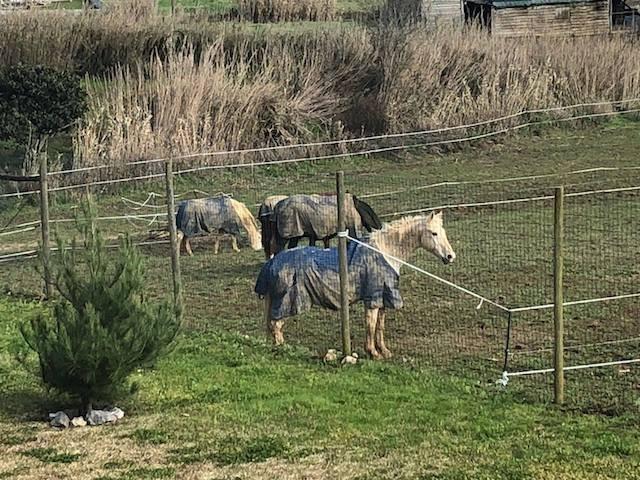

The main reason why we strive for as much pasture time as possible is that by nature, horses live in herds and are continually moving around over large areas to graze. Since our "quinta" is on a sort of hill, our horses build fitness and stamina even when they are not trained in the riding arena. Also, various scientific studies link lengthy turnout and constant movement to a lot of benefits and positive physical and psychic effects:
- Better breathing
- Stronger bones
- Better blood circulation
- Smoother muscles and tendons
- Better hoof health
- Better digestion and disposal of waste in the body
- Easier to condition and keep conditioned
- Countering the effects of arthritis in older horses
- Freedom of choice where to go and what to do, so less boredom and less frustration
- Lower stress levels
- Reduced colic risk
- Reduced ulcer risk
The Drawbacks of Barn Time
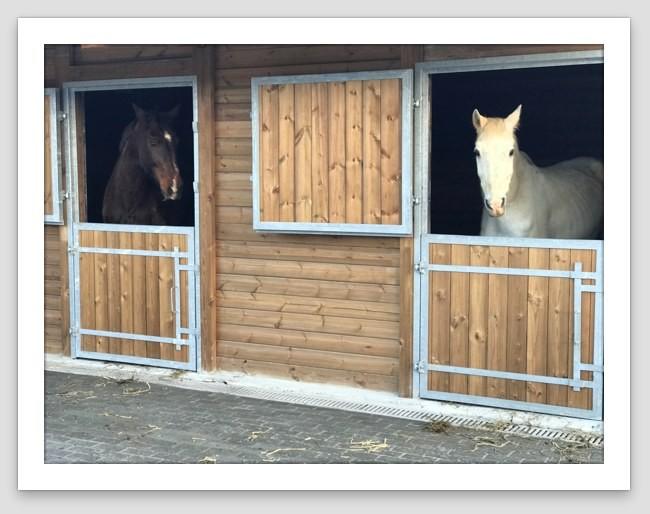 Now, of course, one of the extremes of the ratio “barn time – pasture time” is that horses work for one hour in the riding arena and then spend the rest of their time - up to 23 hours - in a stall and have zero pasture time. This doesn't meet the natural needs of a horse. Then the horse may be well-trained physically seen, but not well-balanced in mind, heart, and soul. Keeping a horse stalled for long periods of time can be stressful. When horses aren't allowed to be horses it can cause the so-called "stable vices". Stereotypic behaviors such as weaving, chewing, repetitive pawing, cribbing and stall-walking are less common among horses who turn out in groups. In general, horses who experience pasture time are easier to train and handle and less likely to explode with bottled-up energy than horses who are stalled 23 hours a day. And horses appreciate the company of each other when turned out, as they are social creatures. Group turnouts give them a chance to fulfill their need for social contact with other horses and mutual grooming.
Now, of course, one of the extremes of the ratio “barn time – pasture time” is that horses work for one hour in the riding arena and then spend the rest of their time - up to 23 hours - in a stall and have zero pasture time. This doesn't meet the natural needs of a horse. Then the horse may be well-trained physically seen, but not well-balanced in mind, heart, and soul. Keeping a horse stalled for long periods of time can be stressful. When horses aren't allowed to be horses it can cause the so-called "stable vices". Stereotypic behaviors such as weaving, chewing, repetitive pawing, cribbing and stall-walking are less common among horses who turn out in groups. In general, horses who experience pasture time are easier to train and handle and less likely to explode with bottled-up energy than horses who are stalled 23 hours a day. And horses appreciate the company of each other when turned out, as they are social creatures. Group turnouts give them a chance to fulfill their need for social contact with other horses and mutual grooming. 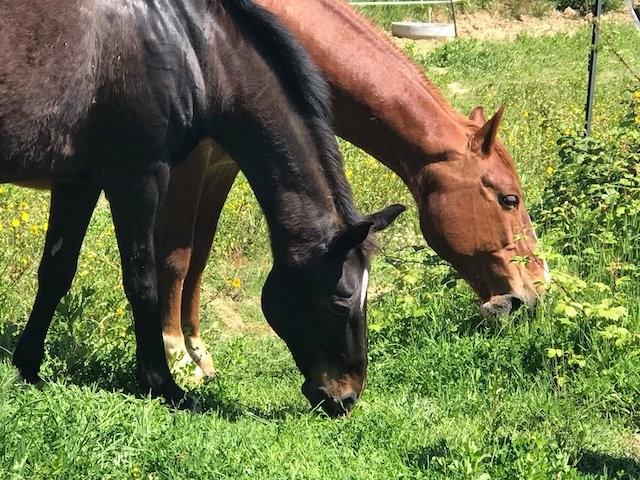 Now because of these benefits, some people start to use moral judgements:
Now because of these benefits, some people start to use moral judgements:
- Round-the-clock turnout is good.
- Stabling horses is wrong.
They use a sort of black/white algorithms that do not allow subtleties:
- It is either good or bad.
- It is right or wrong.
- It is yes or no.
But nothing is black or white:
- Clock-around turnout has some cons and challenges as well.
- Stabling has some pros and benefits.
Let's have a look:
Turnout: The Challenges
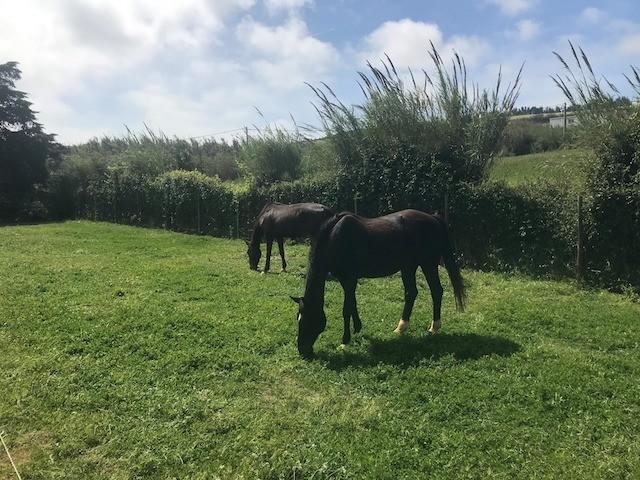 It can be a bit more challenging to keep horses in perfect body and coat condition with round-the-clock turnout:
It can be a bit more challenging to keep horses in perfect body and coat condition with round-the-clock turnout:
- While pasture time is a great way to meet our horses' natural needs for moving, grazing, and socializing, it is much harder to regulate what they eat. When horses are pasture feed, we all know the "fat on air" type of horses and horses having trouble keeping pounds, and that's because it's difficult to regulate the feed intake of individual horses on pasture.
- Black horses often have their coats sun-faded.
- At times, you might experience lightly chipped hooves.
- Pastured horses unavoidable get little scrapes and scratches when out on pasture.
- And yes, the horses get dirty, after enjoying a dust or mud bath.
So 24/7 turn out may not be the best option for competition or show horses, or horses that will be up for sale. 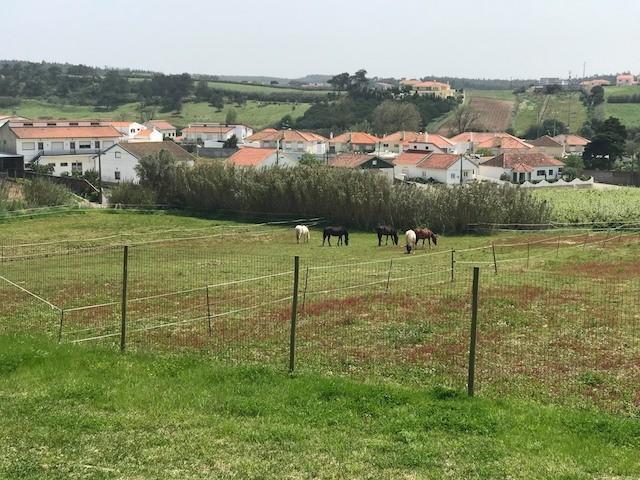 Another challenge is that if you don't train, what I call, a “movie recall”, your horses won’t be waiting at the gate when you show up. Then, when your pasture is quite large, it’s often a long walk to get them. So it's helpful to introduce a "movie recall", and this is what it means: dogs and other animals that are trained for movies will run, across a street, through a field, or jump out of a window because the film script says so and they are trained to do it. But there has to be a reliable return to the trainer not to waste too much time when the film take has to be repeated. And this return is called a "movie recall". So it's very useful to condition a word that guarantees that your horses will come to you. I use "kommaar" and see the video below at 0:41 to see and hear an example. Of course, there’s a risk that a horse could get hurt in the pasture by himself or with another horse, though horses who live out in a herd generally learn to be sure-footed and to take care of themselves. However, the risk of getting injured is one of the major reasons why people believe that housing a horse in a stall is the best way to provide safety for horses. However, to overcome this challenge and to minimize injury risks, we make sure that turnout areas are securely fenced, and free of holes, rubbish, and other hazards.
Another challenge is that if you don't train, what I call, a “movie recall”, your horses won’t be waiting at the gate when you show up. Then, when your pasture is quite large, it’s often a long walk to get them. So it's helpful to introduce a "movie recall", and this is what it means: dogs and other animals that are trained for movies will run, across a street, through a field, or jump out of a window because the film script says so and they are trained to do it. But there has to be a reliable return to the trainer not to waste too much time when the film take has to be repeated. And this return is called a "movie recall". So it's very useful to condition a word that guarantees that your horses will come to you. I use "kommaar" and see the video below at 0:41 to see and hear an example. Of course, there’s a risk that a horse could get hurt in the pasture by himself or with another horse, though horses who live out in a herd generally learn to be sure-footed and to take care of themselves. However, the risk of getting injured is one of the major reasons why people believe that housing a horse in a stall is the best way to provide safety for horses. However, to overcome this challenge and to minimize injury risks, we make sure that turnout areas are securely fenced, and free of holes, rubbish, and other hazards. 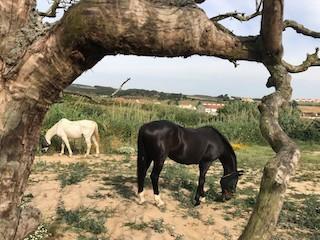 Next, we pay careful attention to the herd dynamic, and it's important to be aware that established group dynamics sometimes change with time since horses may become weaker with age or when they experience a setback or illness. As a result, other horses can become more assertive or even aggressive. So sometimes you have to create multiple groups for this reason. "Cross-fencing" - which is splitting a large pasture into smaller areas - allows horses to graze in compatible groups. It also will enable horses that are sick, injured or disabled to graze individually. Also, horses that continue to harass other horses should be separated. Cross-fencing is also a great way to introduce new horses.
Next, we pay careful attention to the herd dynamic, and it's important to be aware that established group dynamics sometimes change with time since horses may become weaker with age or when they experience a setback or illness. As a result, other horses can become more assertive or even aggressive. So sometimes you have to create multiple groups for this reason. "Cross-fencing" - which is splitting a large pasture into smaller areas - allows horses to graze in compatible groups. It also will enable horses that are sick, injured or disabled to graze individually. Also, horses that continue to harass other horses should be separated. Cross-fencing is also a great way to introduce new horses. 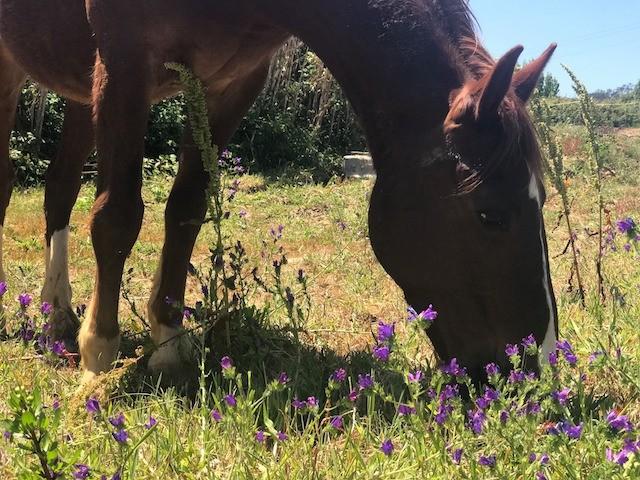 Another challenge is the pasture maintenance. It’s important to rotate pastures, to mow, drag and reseed pastures, to monitor for poisonous plants and parasite risks, and to scoop the manure. But the good thing is: we’ll have less stall cleaning because there is substantially less manure and less waste when horses are on pasture.
Another challenge is the pasture maintenance. It’s important to rotate pastures, to mow, drag and reseed pastures, to monitor for poisonous plants and parasite risks, and to scoop the manure. But the good thing is: we’ll have less stall cleaning because there is substantially less manure and less waste when horses are on pasture.
Stabling: The Benefits
First of all, let me make clear that the list below is what I consider as benefits (and feel free to agree to disagree 😉and to choose an alternative to stabling). The pros of barn time for us are:
- We invite our horses to come back at feeding times, and they want to go into a box simply because they know that is where they are fed. In separate boxes, we can easily regulate the quality and quantity of the feed each one of them consumes. For example, Maestro is 25 yo and has senior food, and he's a slow eater. Prince Elmelund eats much faster and gets regular food in a smaller portion. So when he's finished, he'd love to eat the rest of Maestro's food. So feeding individually prevents this, and it allows our horses to eat exactly what they need, plus it makes it easier to give supplements or medications.
- The feeding schedule provides an opportunity to inspect each of our horses on a daily basis. When they come in, we look at them and notice if something’s not right.
- Another reason for stalling is easy access. For example, when the farrier or veterinarian comes, it is much quicker to grab a halter and go to a box to catch a horse.
- A fourth major reason is training: It is much more convenient to catch them all at once with a "movie recall", and then go to stalls to invite the next horse for a training sessions. It saves a fair bit of time going back and forth to pastures to catch horses for their training session. To keep the horses in the boxes busy there is hay or straw available.

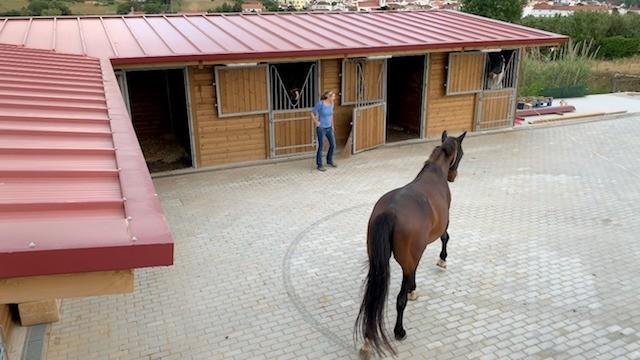
To Stall Or Not To Stall?
That is one of the biggest debates in the horse world at the moment. In general, stabling is more a human thing than a horse thing. So when we want to house a horse, it's our responsibility to know the benefits and drawbacks when it comes to stalling a horse and to maintaining horses on pasture. (You can find in-depth analysis when you Google on this subject.) In my opinion, it all comes down to finding the right balance between keeping horses stabled and turning them out. When finding this balance, horses will be happy and healthy in body, mind, heart and soul, and at the same time, we can train and feed our horses in an efficient and effective way. With this in mind, this is how we do it:
Our "Barn Time - Pasture Time" Ratio
Last year, we built the riding arena, and this year, we decided to build a barn with 6 boxes, a tack room, and a groom & wash stall next to the riding arena: 
Close to the barn, we have several pastures and neighboring paddocks. All we have to do is open the paddocks and the stall doors to let the horses in and out - no haltering and no individual walking required. The horses get fed their breakfast and dinner in the boxes, so they get the food and supplements that they require. Then they return to the pasture where they are free to move around and run, play, and roll as they please. At training days, they come back in for a training session, and after training, they return to the pasture. None of my horses spends the night in their stalls. They return to the paddocks where they spend all night, free to move around, lay down and rest, eat hay through hay-nets, and drink however they want. In this video, you can see how the boxes were built, how I use the "movie recall", and how my horses find their own box:
The next video, shows how the horses go in and out the boxes:
I will speak about the tiles in a future post.

